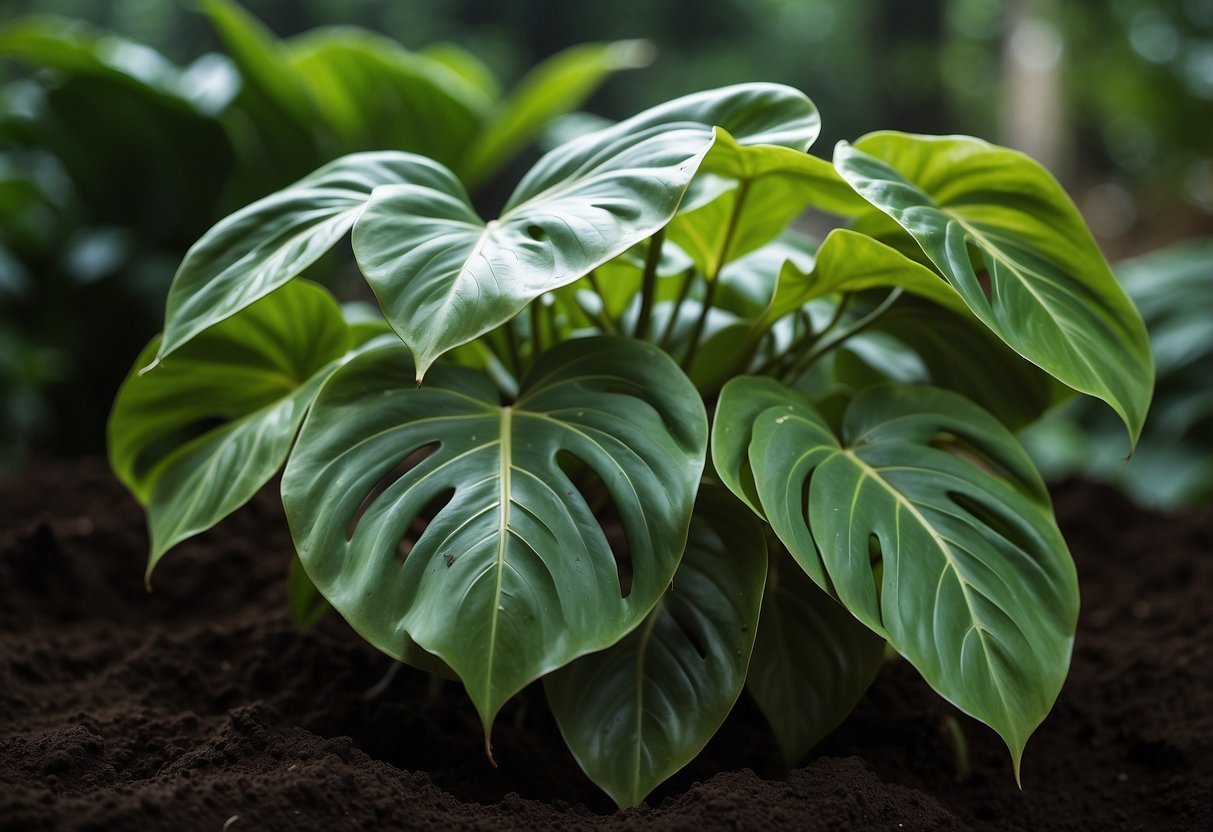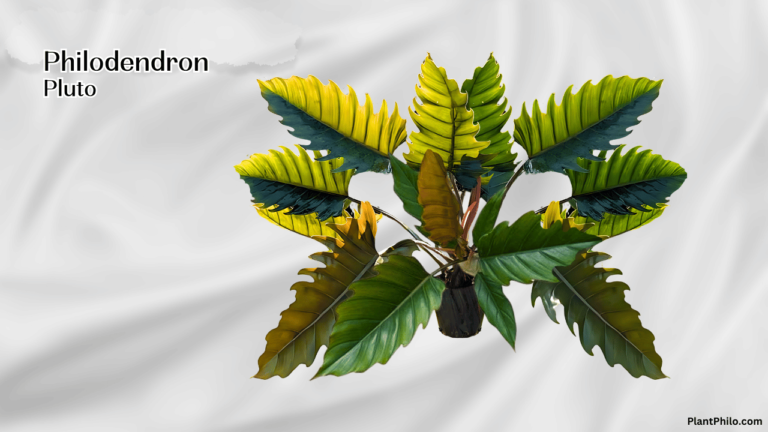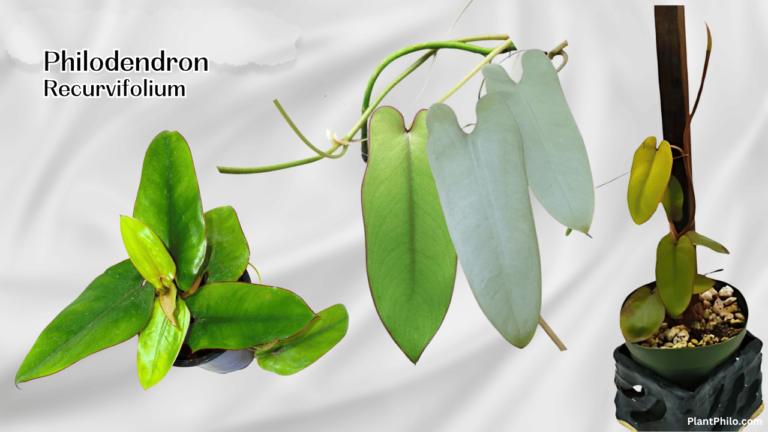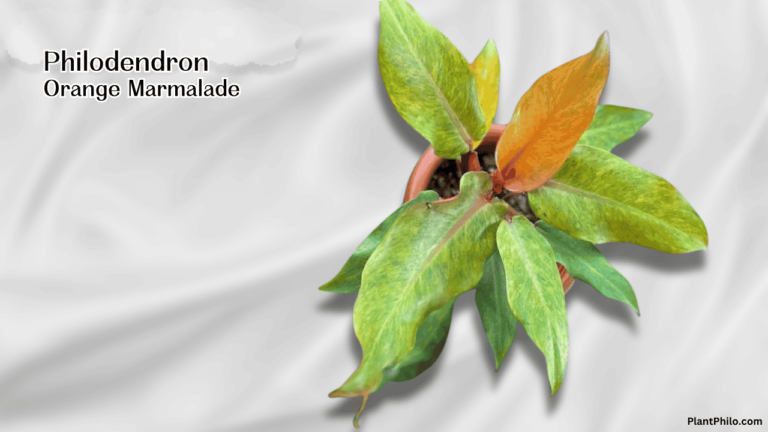Best Soil Philodendrons: Core Ingredients with Supplementary Additives
Tired of your Philodendron looking like it needs a vacation? Turns out, it might just need a new diet… a soil diet, that is! We’ll spill the tea on why it’s picky about its potting mix and how to whip up a soil recipe it’ll love. Forget Miracle-Gro, your Philodendron wants a gourmet meal! Let’s find out how to create a soil blend that will have your plant singing your praises (or at least, growing like crazy).
Philodendrons require well-draining soil that retains moisture, is slightly acidic, and provides essential nutrients. But with so many soil options available, how do you know which one is the best for your philodendron?
Understanding the specific needs of philodendron soil is the first step to creating the perfect mix.
When it comes to choosing the best soil for your philodendron, there are several core ingredients that should be included in the mix.
These ingredients support improving soil drainage, retaining moisture, and providing essential nutrients for your plant. Additionally, activated charcoal can be added to help absorb excess moisture and prevent root rot.
Key Takeaways
- Philodendrons require well-draining soil that retains moisture, is slightly acidic, and provides essential nutrients.
- Core ingredients of the ideal philodendron soil mix include peat moss, perlite, vermiculite, and sphagnum moss.
- Homemade soil mix recipes can be used, but commercial soil mixes are also available.
Understanding Philodendron Soil Needs
If you want your Philodendrons to thrive and grow healthy, you need to understand their soil needs.
Philodendrons thrive in tropical environments and have specific soil needs due to their natural habitat in rainforests. In this section, we will explore the essential characteristics of Philodendron soil, including the soil type, structure, and requirements.
Rainforest Roots
Originating in the tropical rainforests of Central and South America, Philodendrons have evolved to thrive in a specific soil environment. In their natural habitat, they grow in loose, airy soils rich in decaying organic matter. This type of soil allows for excellent drainage while retaining enough moisture to keep the roots hydrated.
Rainforest soil is nutrient- and organic matter-rich, and it retains a lot of water. Philodendrons are well-suited to these environments because of the way their roots draw water and nutrients up from the ground.
Essential Soil Characteristics
The ideal mix should contain 50% base ingredients, 40% drainage components, and 10% organic matter. The soil mix should hold the following key characteristics:
- Well-Draining: Philodendron roots are susceptible to rot if left in standing water. A well-draining mix allows excess moisture to escape, keeping the roots healthy and aerated.
- Moisture-Retaining: While good drainage is essential, the soil should also hold enough moisture to keep the roots hydrated between waterings. A good balance is crucial to prevent both root rot and dehydration.
- Nutrient-Rich: Philodendrons are moderate feeders and require a consistent supply of nutrients for optimal growth and vibrant foliage. The soil should contain organic matter like compost or worm castings to provide these essential nutrients.
- Slightly Acidic pH: Philodendrons prefer a slightly acidic soil pH, ideally between 5.5 and 6.5. This pH range helps the plant absorb essential nutrients more efficiently.
Core Ingredients of the Ideal Philodendron Soil Mix
A few essential components should be considered while you are making the ideal soil mix for your Philodendron plant. The mixture of these parts will create a nutrient-rich, balanced soil mix that is ideal for plant growth.
Core Ingredients For Philodendron Soil Mix
- Peat Moss: This spongy, organic material is excellent at retaining moisture, ensuring your Philodendron’s roots stay hydrated. It’s also slightly acidic, which philodendrons prefer. Be sure to use peat moss that has been sustainably harvested.
- Perlite: These tiny, white volcanic rocks are crucial for aeration and drainage. They prevent the soil from becoming compacted, allowing roots to breathe and reducing the risk of root rot.
- Orchid Bark: Chunks of bark, often from fir or pine trees, create air pockets in the soil and improve drainage. As they decompose, they also contribute to soil structure and release nutrients.
- Coco Coir: A sustainable alternative to peat moss, coco coir is derived from coconut husks. It offers similar water-holding capabilities but is more environmentally friendly.
Supplementary Additives
In addition to the core ingredients, there are a few supplementary additives that you can include in your soil mix to provide additional benefits to your Philodendron plant.
- Charcoal: Charcoal is an excellent ingredient for improving soil drainage and preventing soil odors. It also allows excess moisture to be absorbed into the soil.
- Sand: Coarse sand improves drainage and prevents soil compaction. It also aids in preventing soil compaction and provides a good source of minerals. However, use it sparingly, as too much sand can make the mix too dry.
- Worm Castings: These nutrient-rich castings are a natural fertilizer, providing essential macro and micronutrients for your Philodendron’s growth and overall health.
- Compost: Well-rotted compost adds organic matter and beneficial microorganisms to the soil, enhancing its fertility and structure. It’s a fantastic way to recycle kitchen scraps and provide your Philodendron with sustained nourishment.
Types of Soil Mixes Suitable for Philodendron
Philodendrons are beautiful and easy-to-care-for plants that can thrive in different soil types. However, not all soil types are created equal, and some are better suited for philodendrons than others. In this section, we will explore the different types of soil that are suitable for philodendrons. At a glance,
| Soil Type | Composition | Benefits | Considerations |
| Aroid Mix | Blend of peat moss/coco coir, perlite/pumice, bark/wood chips, sometimes charcoal or worm castings | Specifically formulated for aroids (including Philodendrons), balanced moisture retention and drainage, often nutrient-rich | Can be more expensive than DIY mixes, quality varies between brands |
| Orchid Mix | High bark content, peat moss/coco coir, perlite | Superior drainage, good aeration, suitable for epiphytic Philodendrons | Can dry out quickly if not watered regularly |
| Peat-Based Mix | Primarily decomposed sphagnum moss (peat moss) | Excellent moisture retention, slightly acidic pH, lightweight | Can become waterlogged, sustainability concerns (consider coco coir as an alternative) |
| Coco Coir Mix | Derived from coconut husks | Sustainable, good moisture retention, less acidic, easier to rewet, some potassium and phosphorus, coarser texture | May need additional nitrogen fertilizer |
| Perlite/Vermiculite Mix | Volcanic glass (perlite) and expanded mica (vermiculite) | Improves aeration and drainage, lightweight | Perlite doesn’t hold moisture, vermiculite can hold too much. Use in combination with moisture-retaining ingredients (peat moss/coco coir). |
| Pre-Mixed Potting Soil | Blend of peat moss, perlite, vermiculite, bark, compost, etc. | Convenient, often enriched with nutrients, variety of options | Quality varies, check for good drainage, can be expensive |
| Pon (LECA) | Lightweight expanded clay aggregate | Excellent drainage and aeration, promotes strong root development, reusable | Requires a specific watering technique (semi-hydroponics), may need additional nutrient supplementation |
Peat Moss or Coco Coir: Benefits and Differences
Peat moss and coco coir are both organic materials that can be used as soil amendments for philodendrons.
| Feature | Peat Moss | Coco Coir |
| Origin | Decomposed sphagnum moss | Derived from coconut husks |
| Sustainability | Less sustainable due to extraction methods | More sustainable and renewable |
| pH Level | More acidic (pH 3.5-4.5) | Less acidic/near neutral (pH 5.2-6.8) |
| Water Retention | Holds moisture very well, but can be difficult to rewet when completely dry | Holds moisture well, but less than peat moss. Easier to rewet when dry. |
| Nutrient Content | Low in nutrients | Naturally contains some potassium and phosphorus, but low in nitrogen. |
| Texture | Finer texture | Coarser texture, providing good aeration |
| Cost | Generally more affordable | Can be more expensive than peat moss |
Both peat moss and coco coir can be used as standalone soil mixes or added to potting soils to improve water retention and aeration.
Homemade vs. Commercial Soil Mixes
When it comes to choosing the right soil mix for your philodendron, you have the option of either making your own soil mix or buying a commercial one. Both have their advantages and disadvantages, and your choice will ultimately depend on your personal preferences and needs.
| Feature | Homemade Mix | Commercial Mix |
| Customization | Highly customizable to your plant’s specific needs. Adjust ratios of ingredients based on variety, growth stage, and environment. | Limited customization options. Choose a mix labeled for aroids or Philodendrons. |
| Cost | More cost-effective in the long run, especially if you have access to bulk ingredients or compost. | More expensive upfront, especially for repotting multiple plants. |
| Quality Control | Complete control over ingredient quality and sourcing. No unwanted additives or chemicals. | Varies depending on the brand. Choose reputable brands with high-quality ingredients and avoid mixes with excess fertilizer or moisture crystals. |
| Freshness | Mix up a fresh batch whenever needed, ensuring optimal nutrient levels and microbial activity. | Less control over freshness and nutrient levels. |
| Convenience | Requires time and effort to gather ingredients and mix. | Readily available and easy to use. |
| Variety | Limited to the ingredients you choose. | Wide range of options tailored to specific plant types. |
| Nutrient Content | Nutrients depend on the ingredients used (compost, worm castings). May require additional fertilization. | Often enriched with fertilizers, providing an initial nutrient boost. |
| Environmental Impact | Potentially more sustainable if using compost and avoiding peat moss. | Some mixes contain peat moss, which raises environmental concerns. Look for eco-friendly alternatives. |
DIY Soil Mix Recipes
To make your own soil mix for philodendrons, you can use a variety of ingredients and recipes based on your preferences and the needs of your plants. Here are some DIY soil mix recipes to consider:
DIY Peat-based Soil Mix Recipe
Peat-based soil mixes are a popular choice for philodendrons as they provide good aeration and drainage.
To make a peat-based soil mix, you will need:
- 2 parts peat moss
- 1 part perlite
- 1 part vermiculite
Combine all the ingredients in a large container and mix well.
Fill your pots or planters with the soil mix, leaving room at the top for watering.
Water your plants thoroughly and allow them to drain before adding more water.
DIY Orchid Mix Soil Recipe
Orchid mixes are also suitable for philodendrons as they provide good drainage and aeration.
To make an orchid mix soil, you will need:
- 2 parts bark chips
- 1 part perlite
- 1 part charcoal
Combine all the ingredients in a large container and mix well.
Fill your pots or planters with the soil mix, leaving room at the top for watering.
Water your plants thoroughly and allow them to drain before adding more water.
DIY Aroid Mix Soil Recipe
Aroid mixes are another option for philodendrons as they provide good drainage and aeration.
To make an aroid mix soil, you will need:
- 2 parts peat moss
- 1 part perlite
- 1 part orchid bark
Combine all the ingredients in a large container and mix well.
Fill your pots or planters with the soil mix, leaving room at the top for watering.
Water your plants thoroughly and allow them to drain before adding more water.
DIY General Houseplant Mix Soil Recipe
If you want a general soil mix that works well for most houseplants, you can use the following recipe:
- 2 parts peat moss
- 1 part perlite
- 1 part vermiculite
- 1 part compost
Combine all the ingredients in a large container and mix well.
Fill your pots or planters with the soil mix, leaving room at the top for watering.
Water your plants thoroughly and allow them to drain before adding more water.
Common Soil-Related Problems and Solutions
Philodendrons are relatively easy to care for, but soil-related problems can still arise. In this section, we will discuss some common soil-related problems and their solutions.
Philodendrons are relatively easy to care for, but soil-related problems can still arise. In this section, we will discuss some common soil-related problems and their solutions.
Overwatering and Root Rot
Overwatering is the main cause of root rot in Philodendrons, resulting in yellow leaves, wilting, and a foul odor. If this happens, remove the plant, clean the roots, trim any rot, and repot in well-draining soil.
Underwatering and Soil Dryness
Underwatering leads to dry, crispy leaves, brown tips, and slow growth in Philodendrons. Increase watering frequency until soil is moist, but not soggy. Use a moisture meter or your finger to gauge dryness. Bottom watering helps hydrate roots thoroughly.
Nutrient Deficiencies
Nutrient deficiencies occur when your Philodendron lacks essential nutrients, often due to poor soil or infrequent fertilizing. Yellowing leaves, stunted growth, and poor flowering indicate this issue. Repotting into nutrient-rich soil and regular fertilizing with a balanced liquid fertilizer can help.
Too Much Fertilizing
Over-fertilizing can harm your Philodendron, too. Brown tips, wilting, stunted growth, and white crust on the soil are signs of excess fertilizer. Flush the soil with water to remove excess salts, and use a less concentrated fertilizer or reduce application frequency.
Maintenance Tips for Healthy Soil
Philodendrons are relatively easy to care for, but soil-related problems can still arise. In this section, we will discuss some common soil-related problems and their solutions.
Overwatering and Root Rot
Overwatering is the most common culprit in Philodendron distress, often leading to root rot. This fungal disease thrives in soggy soil, causing yellowing leaves, wilting, mushy stems, and a foul odor.
If you suspect root rot, act quickly! Remove the plant, wash away the old soil, and trim any damaged roots—Repot in fresh, well-draining soil and water less frequently.
Underwatering and Soil Dryness
Underwatering can also harm your Philodendron. Look for dry, crispy leaves, brown tips or edges, and slowed growth as signs your plant is thirsty.
Increase watering frequency, ensuring the soil is moist but not soggy. Use a moisture meter or your finger to check the soil’s dryness. Bottom watering can ensure thorough root hydration.
Nutrient Deficiencies
Nutrient deficiencies occur when your Philodendron lacks essential nutrients, often due to poor soil or infrequent fertilizing. Yellowing leaves, stunted growth, and poor flowering indicate this issue. Repotting into nutrient-rich soil and regular fertilizing with a balanced liquid fertilizer can help.
Too Much Fertilizing
Over-fertilizing can harm your Philodendron, too. Brown tips, wilting, stunted growth, and white crust on the soil are signs of excess fertilizer. Flush the soil with water to remove excess salts, and use a less concentrated fertilizer or reduce application frequency.
Frequently Asked Questions
What type of soil is ideal for promoting healthy growth in Philodendron plants?
Philodendrons thrive in well-draining soil that is rich in organic matter.
A soil mix that contains peat moss, perlite, and orchid bark is ideal for promoting healthy growth in Philodendron plants.
The soil pH level should be slightly acidic, between 5.0 to 6.0, to ensure optimal nutrient uptake.
How do I prepare a soil mix suitable for Philodendron Brasil?
To prepare a soil mix suitable for Philodendron Brasil, combine equal parts of peat moss, perlite, and orchid bark. This mix will provide the plant with the necessary nutrients and drainage to promote healthy growth.
Is it beneficial to add coffee grounds to the soil of Philodendron plants?
While coffee grounds can be beneficial for some plants, they are not recommended for Philodendron plants.
Coffee grounds can increase the soil pH level, making it more alkaline, which can lead to nutrient deficiencies and stunted growth in Philodendron plants.
Can Philodendron plants thrive in a potting mix designed for cacti and succulents?
No, Philodendron plants cannot thrive in a potting mix designed for cacti and succulents.
These plants require a soil mix that is rich in organic matter and retains moisture, which is not provided by a cactus and succulent soil mix.
What are the differences between soil requirements for Philodendron Birkin and Philodendron Pink Princess?
Philodendron Birkin and Philodendron Pink Princess have similar soil requirements.
Both plants require a well-draining soil mix that is rich in organic matter, with a slightly acidic pH level between 5.0 to 6.0.
However, Philodendron Pink Princess may benefit from a soil mix that contains more perlite to increase drainage, as this plant is more susceptible to root rot.
Does Miracle-Gro potting soil meet the needs of Philodendron Selloum?
Miracle-Gro potting soil can be used for Philodendron Selloum, but it may only meet some of the plant’s needs. This soil mix can be too dense and retain too much moisture, which can lead to root rot.
It is recommended to mix in additional perlite or orchid bark to increase drainage and promote healthy growth.






